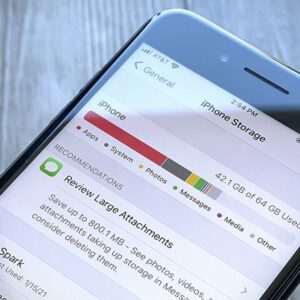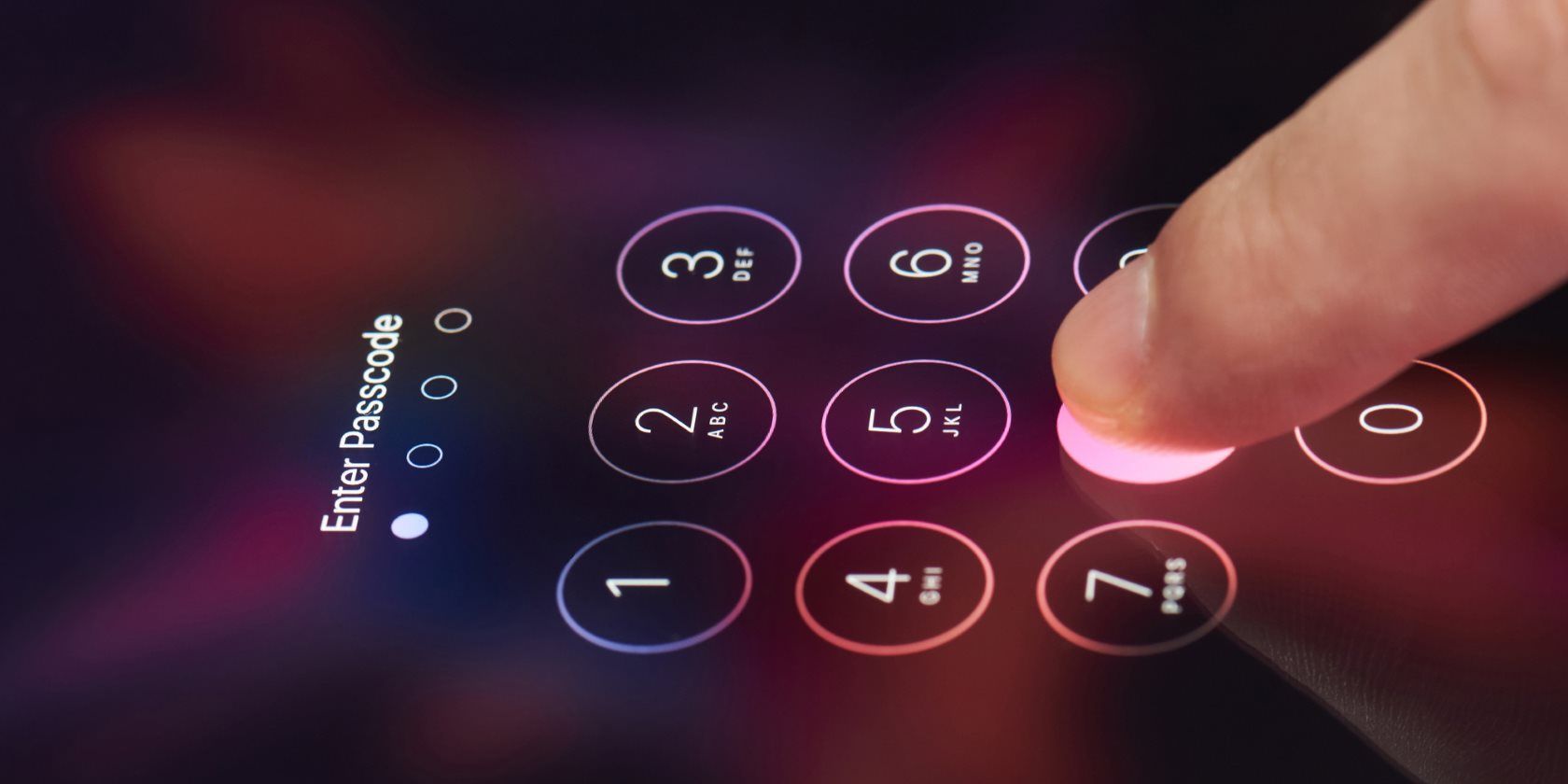Introduction:
Are you tired of feeling powerless against the constant surveillance of your smartphone? Do you yearn for the days when your location was truly your own? If so, you’re not alone. In today’s digital landscape, our phones have become both allies and inadvertent foes when it comes to protecting our privacy.
Did you know that your smartphone can track your location even when it’s in airplane mode, SIM-less, and disconnected from Wi-Fi? It’s a shocking revelation, but one that highlights the complex nature of location tracking and the critical need for understanding how to take control of your digital privacy.
How much do you really know about the various settings and features on your device that can impact your location privacy? From Airplane Mode to Location Services and Wi-Fi, the truth may surprise you.
In this comprehensive guide, we’ll dive deep into the inner workings of your smartphone’s location tracking capabilities, demystifying the technicalities and empowering you with practical, easy-to-implement strategies to safeguard your digital footprint.
Get ready to reclaim your location privacy and take the first step towards a more secure digital life. Let’s explore the tips and tricks that will transform your smartphone from a potential privacy threat to a trusted ally.
Introduction
In today’s hyper-connected world, our smartphones have become an extension of ourselves, serving as gateways to a vast array of information, entertainment, and communication. However, this convenience often comes at the cost of our digital privacy, as our devices have become silent sentinels, constantly tracking and logging our every movement.
Did you know that your smartphone can track your location even when it’s in airplane mode, SIM-less, and disconnected from Wi-Fi? This startling revelation underscores the complex and often counterintuitive nature of location tracking, making it essential for us to understand the inner workings of our devices and the myriad of ways they can compromise our privacy.
How much do you really know about the various settings and features on your device that can impact your location privacy? From Airplane Mode to Location Services and Wi-Fi, the truth may surprise you. Many of us operate under the misconception that certain actions, like putting our phones in Airplane Mode, will effectively prevent location tracking, but the reality is much more nuanced.
In this comprehensive guide, we’ll embark on a journey to demystify the technicalities of location tracking, empowering you with practical, easy-to-implement strategies to safeguard your digital footprint. By the end of this article, you’ll have a deep understanding of the various mechanisms at play, and you’ll be equipped with the knowledge and tools necessary to reclaim your location privacy and take control of your digital life.
Get ready to bid farewell to the days of feeling powerless against the constant surveillance of your smartphone. This guide will transform your device from a potential privacy threat to a trusted ally, ushering you into a new era of digital freedom and empowerment.
Understanding the Basics of Location Tracking
To effectively protect your location privacy, it’s crucial to first understand the underlying technologies and mechanisms that enable location tracking on your smartphone. Let’s dive into the key components that make up this complex ecosystem.
The Role of Cell Towers
Our smartphones are designed to maintain constant connectivity, and a vital part of this process involves their interaction with cell towers. As we move throughout our day, our devices are constantly scanning for and connecting to the strongest cell tower signal, enabling us to make calls, send messages, and access the internet. This constant communication with cell towers, however, also serves as a means for your service provider to track your location.
Even without an active SIM card, your smartphone is still capable of interacting with cell towers for essential services, such as emergency calls and time synchronization. While these interactions are more limited in scope and frequency compared to a device with an active SIM, they can still be detected and used to approximate your location.
GPS and Assisted Global Navigation Satellite Systems (A-GNSS)
The Global Positioning System (GPS) is another prominent technology used for location tracking on our smartphones. GPS works by receiving signals from a network of satellites orbiting the Earth, which your device can then use to determine its precise location through a process called trilateration.
While GPS itself is a one-way communication system, where your device only receives signals, the location data it generates can still be stored and shared with various apps and services on your phone. Additionally, a system called Assisted GNSS (A-GNSS) can utilize both GPS and other satellite navigation systems, as well as cell tower and Wi-Fi signals, to enhance the speed and accuracy of location fixes, even in areas with poor GPS reception.
The Power of Wi-Fi Signals
You might be surprised to learn that your smartphone can also use Wi-Fi signals to help determine your location, even if you’re not actively connected to any Wi-Fi network. This is made possible through a process called Wi-Fi triangulation, which involves your device measuring the varying signal strengths of nearby Wi-Fi networks to estimate its position.
Furthermore, your smartphone is constantly broadcasting probes, which are essentially requests to connect to any nearby Wi-Fi networks that it has connected to in the past. This unique list of remembered networks can act as a digital fingerprint, potentially allowing your location to be tracked based on the specific Wi-Fi networks your device is seeking.
Airplane Mode: The Myth and the Reality
One of the most commonly held beliefs about location privacy is that putting your smartphone in Airplane Mode will effectively prevent it from being tracked. Unfortunately, this is not entirely accurate. Let’s delve deeper into the limitations of Airplane Mode and explore the ways in which your device can still communicate with various networks, even with this setting enabled.
Cell Tower Communication: Debunking the Myth
Contrary to popular belief, putting your smartphone in Airplane Mode does not completely stop it from communicating with cell towers. While this setting does disable the device’s ability to make or receive calls and access the internet, it does not prevent it from interacting with cell towers for essential services, such as emergency calls and time synchronization.
Even without an active SIM card, your smartphone is designed to maintain a limited connection with cell towers to ensure compliance with regulations and provide access to critical functions. This means that your device can still be tracked, albeit with less accuracy, based on its interactions with nearby cell towers.
Exploring the Limitations of Airplane Mode
Airplane Mode was primarily designed to comply with regulations from the FCC and FAA, which were initially concerned about the potential interference of cell phone signals with aircraft navigation and communication systems. However, as aircraft technology has advanced, these concerns have become less relevant, and the limitations of Airplane Mode have become more apparent.
While Airplane Mode does effectively disable your device’s cellular and data connections, it does not necessarily block all wireless communications. Technologies like GPS, Bluetooth, and Wi-Fi can still remain active, potentially allowing for continued location tracking and other privacy concerns.
Supplementary Features that Remain Active
Even with your smartphone in Airplane Mode, several features and functionalities can still remain active, potentially compromising your location privacy. For example, the GPS receiver on your device can continue to track your location, as it is a one-way communication system that does not require a cellular or data connection.
Additionally, your device may still connect to cell towers for essential services, such as emergency calls, time synchronization, and A-GNSS assistance, which can be used to approximate your location. These supplementary features highlight the need for a more comprehensive understanding of your device’s capabilities and the limitations of Airplane Mode.
Mastering Location Services
Location Services is another crucial aspect of your smartphone’s privacy settings that requires careful attention. By understanding how to navigate and control these settings, you can take a significant step towards safeguarding your location data.
Navigating the Settings: iOS, Android, and GrapheneOS
The process of managing Location Services will vary depending on the operating system of your smartphone. On iOS, you can access these settings by going to Settings > Privacy > Location Services. On Android, the path is typically Settings > Location. For users of the privacy-focused GrapheneOS, the process involves navigating to Settings > Location.
Granular Control: Selectively Granting Location Permissions
One of the most important steps in controlling your location privacy is to carefully review the apps that have been granted access to your location data. In the Location Services settings, you can see which apps have requested and been granted location permissions, and you can selectively revoke those permissions for any apps you deem unnecessary.
Disabling Location Services Entirely
If you want to take a more comprehensive approach to location privacy, you can choose to disable Location Services entirely on your device. This will prevent any apps or system services from accessing your location data, effectively cutting off the flow of this sensitive information.
However, it’s important to note that disabling Location Services may impact the functionality of certain apps and features that rely on location data, such as navigation, weather, and location-based services. As with any privacy-enhancing measure, you’ll need to find the right balance between convenience and protection.
Conquering the Wi-Fi Challenge
Wi-Fi is another ubiquitous technology that can be leveraged for location tracking, even if you’re not actively connected to any Wi-Fi networks. Understanding the various ways your device can be tracked through Wi-Fi signals is crucial for protecting your digital privacy.
The Perils of AGNSS and Wi-Fi Triangulation
As mentioned earlier, the Assisted GNSS (A-GNSS) system can use Wi-Fi signals, in addition to cell tower and satellite data, to enhance the accuracy and speed of location fixes on your smartphone. This means that even if you’re not connected to a Wi-Fi network, your device can still use nearby Wi-Fi access points to determine its location.
Furthermore, a process called Wi-Fi triangulation allows your smartphone to estimate its position by measuring the varying signal strengths of nearby Wi-Fi networks. This technique can be employed even when your device is not actively connected to any Wi-Fi network, presenting another potential avenue for location tracking.
Proactive Measures: Disabling Wi-Fi When Not in Use
To mitigate the risks posed by Wi-Fi-based location tracking, it’s recommended to turn off your device’s Wi-Fi when you’re not actively using it. This can be done by manually disabling the Wi-Fi toggle, or by ensuring that your smartphone’s Wi-Fi is turned off when you activate Airplane Mode.
It’s important to note that simply placing your device in Airplane Mode does not necessarily disable the Wi-Fi functionality, so you’ll need to take an extra step to ensure that the Wi-Fi radio is fully deactivated.
Exploring the Role of Faraday Bags
For an added layer of protection, you may consider investing in a Faraday bag or pouch. These specialized enclosures are designed to block all wireless signals, including cellular, Wi-Fi, Bluetooth, and GPS, effectively rendering your smartphone “invisible” to any tracking or communication networks.
By placing your device inside a Faraday bag, you can temporarily create a secure, signal-free environment, ensuring that your location data is not transmitted or accessible to any external parties. This solution can be particularly useful in situations where you need to maintain complete privacy or when traveling to sensitive areas.
Additional Privacy Measures
While Airplane Mode, Location Services, and Wi-Fi management are critical components of safeguarding your location privacy, there are a few additional measures you should consider to further strengthen your digital defenses.
Bluetooth Low Energy (BLE) and Location Tracking
Bluetooth Low Energy (BLE) is another technology that can be leveraged for location tracking, as it can be used to detect and identify nearby Bluetooth-enabled devices. Similar to the Wi-Fi probes we discussed earlier, your smartphone may continuously broadcast Bluetooth signals, potentially revealing your presence and movements to nearby devices or tracking systems.
To mitigate this risk, it’s recommended to disable Bluetooth on your device when you’re not actively using it, especially in situations where you have privacy concerns.
Leveraging Virtual Private Networks (VPNs)
Virtual Private Networks (VPNs) can also play a role in enhancing your location privacy, as they can mask your device’s true IP address and obfuscate your internet traffic. By routing your online activities through a secure, encrypted VPN connection, you can effectively hide your true location from various online services and tracking mechanisms.
However, it’s important to note that VPNs alone do not provide a complete solution for location privacy, as they primarily focus on protecting your online activities and not the underlying location data generated by your device’s hardware and software.
Understanding the Limitations of Privacy-Focused Operating Systems
While privacy-focused operating systems like GrapheneOS offer a range of advanced security and privacy features, it’s important to understand that they do not provide a panacea for location tracking. Even on these more secure platforms, the fundamental technologies we’ve discussed, such as cell tower communication, GPS, and Wi-Fi, can still be leveraged to determine your location to some degree.
It’s crucial to approach privacy-focused operating systems with a balanced perspective, recognizing that they can significantly enhance your overall digital security and privacy, but may not completely eliminate all location tracking concerns.
Integrating Privacy into Your Lifestyle
Protecting your location privacy is not a one-time task, but rather an ongoing process that requires a shift in mindset and the development of consistent habits. By seamlessly integrating these privacy-enhancing measures into your daily routine, you can ensure long-term protection and peace of mind.
Developing Consistent Habits
The key to successful location privacy management is to make it a habitual part of your daily digital life. This might involve a simple routine, such as turning off your Wi-Fi and Bluetooth when you’re not using them, or placing your smartphone in Airplane Mode when you’re not actively using it.
Finding the Right Balance Between Convenience and Privacy
As you implement these privacy-focused strategies, it’s important to find the right balance between convenience and protection. While the most extreme measures, such as keeping your device in a Faraday bag at all times, may offer the highest level of privacy, they may also significantly impact your day-to-day usability and functionality.
Embracing the Long-Term Benefits of a Privacy-Focused Approach
It’s understandable that some of the privacy-enhancing measures we’ve discussed may seem inconvenient or even extreme at first. However, it’s important to recognize the long-term benefits of this proactive approach. As you become more accustomed to these practices, they will gradually become second nature, and you’ll find that the peace of mind they provide far outweighs any initial inconvenience.
Conclusion: Empowering Yourself in the Digital Age
In the ever-evolving digital landscape, our smartphones have become both allies and inadvertent foes when it comes to protecting our location privacy. By understanding the complex mechanisms behind location tracking and mastering the various settings and features on our devices, we can take back control of our digital footprint and reclaim our rightful sense of privacy.
Recap of Key Learnings
Throughout this comprehensive guide, we’ve explored the intricate workings of cell tower communication, GPS, A-GNSS, and Wi-Fi signals, and how they can be leveraged for location tracking. We’ve also debunked the myths surrounding Airplane Mode and delved into the nuances of Location Services and Wi-Fi management. Additionally, we’ve discussed supplementary measures, such as Bluetooth and VPN usage, to further fortify our digital defenses.
Embracing a Proactive Mindset
The key to safeguarding your location privacy lies in adopting a proactive mindset. By taking the time to understand the technicalities behind these location tracking mechanisms, you can make informed decisions about the privacy-enhancing measures that best suit your needs and lifestyle.
Reclaim Your Digital Freedom
Armed with the knowledge and strategies outlined in this guide, it’s time to take the first step towards reclaiming your digital freedom. Implement the privacy-focused practices that resonate with you, and don’t be afraid to experiment and find the right balance between convenience and protection. Your location data is a precious part of your digital identity, and it’s time to take charge of its safekeeping.
Remember, privacy is a process, and by embracing it as a fundamental part of your digital life, you’ll not only enhance your personal security but also contribute to a more transparent and accountable digital ecosystem for all. Embark on this journey





